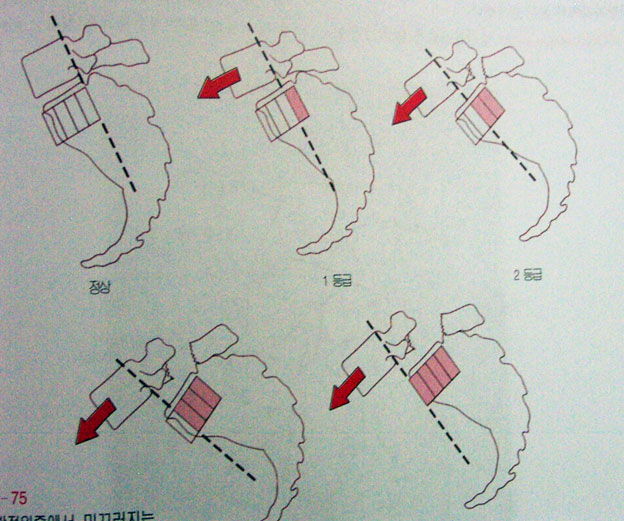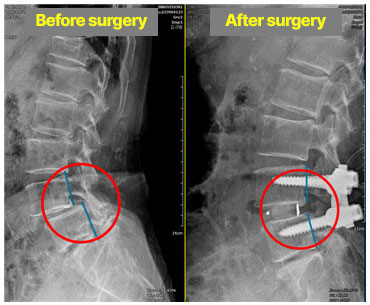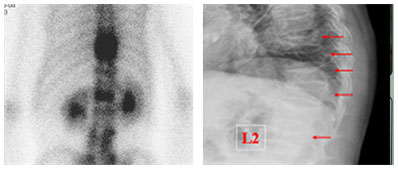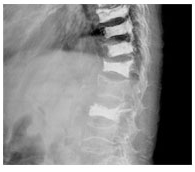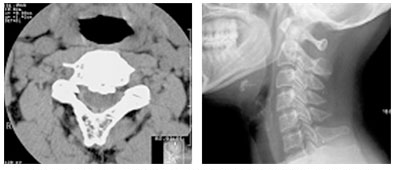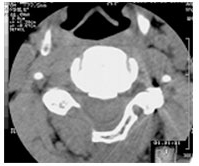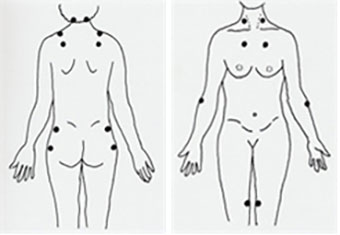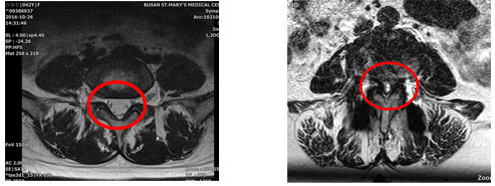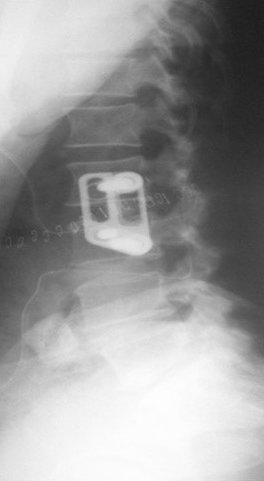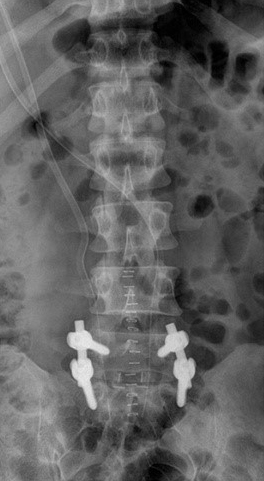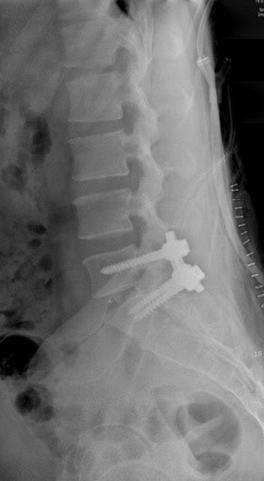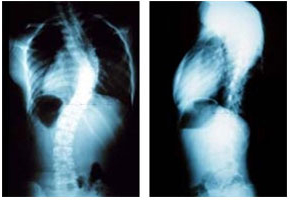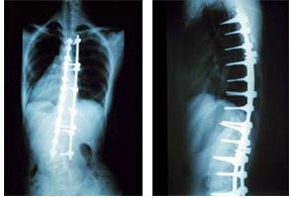- Herniated disc
- Spondylolisthesis
- Osteoporotic Vertebral Compression Fracture
- Back Arthritis
- Cervical myelopathy
- Myofascial Pain Syndrome
- Spinal stenosis
- Internal disc disruption
- Scoliosis
- Orthosis & Surgery
Herniated disc
The disc distributes and absorbs the load of our body between the vertebrae but when the protruding fragment of the disc compresses the spinal cord or spinal nerves, it can cause pains on the back, hips, and legs. About 80-90% of patients can be treated non-surgically, but in case of very severe herniation, surgical treatment is required.


Non-surgical disc therapy, such as medication, physical therapy, and spinal traction, can be helpful, and epidural steroid injection once a week can be an effective treatment for most cases.
However, despite these treatments, symptoms do not improve even after 6 weeks, surgical treatment is required to the patient with difficulties in everyday life due to severe pain, with leg muscle weakness, or with difficulties to urinate and defecate. Many patients are curious about after surgery, but most of them can return to their daily lives without any problems.
About surgery methods
Nucleoplasty, Percutaneous Epidural Neuroplasty. Percutaneous epidural Neuroplasty.
- To shrink the disc, the disc of interest is pierced by inserting the needle with high frequency.
The operation takes about 20 minutes and is performed under local anesthesia, so you can leave the hospital the same day. Patients with mild disc herniation can immediately experience improvement in symptoms. Recently, it is possible to reach the target area along the neural tube through the sacral entrance above the anus. This operation requires a one-day hospitalization.
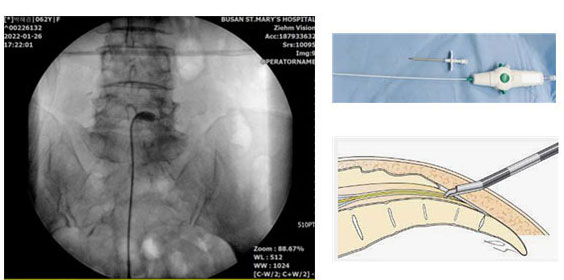
<Neuroplasty image, Approaching the target area using an instrument (right) for nerve decompression>
Endoscopic Spine Surgery
- Recently, endoscopic instruments and clinical skills have been further developed, and endoscopic surgery is performed only with local anesthesia without resection for most disc patients. It is possible to perform surgery while talking to the patient while checking the disc with a device containing a camera inserted through a small incision of 1 cm. It is possible to leave the hospital on the same day after surgery, and you can return to your daily life and work immediately.
Unlike conventional disc surgery, which required extensive bone removal and screwing in due to instability, endoscopic spine surgery can reduce various surgical complications and does not require blood transfusion as there is little bleeding.
The surgery is performed for patients with low back pain or pulling and numbness in the leg muscles have not improved despite various general treatments or have weakened leg strength due to nerves being pressed by the disc, or leg sensory and motor function.
For about 2 weeks, it is recommended to avoid lifting heavy objects or sitting for a long time, and to walk or rest with your back straight. After 2 weeks, you can do light exercise such as swimming or hiking.
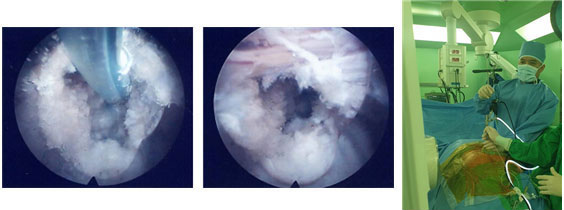
<Endoscopic surgery: Finishing a removed disc using high frequency or laser>

<Backward protruding disc before surgery (within the circle)> <After surgery the disc was removed>
<Endoscopic Spine Surgery>
Microscopically Assisted Percutaneous Nucleotomy
- This operation is the most effective and has no sequelae or recurrence in the last 100 years. Recently, endoscopic surgery is mainly performed, but in the case of patients who cannot undergo endoscopic surgery, incisional surgery is performed. Since only about 3 cm of skin is incised and surgery is performed under a microscope, nerve damage and bleeding can be safely avoided through magnified microscopic images. Patients can walk from the day after the incisional surgery, and almost all patients can live a normal life without any complications or sequelae.

<Microscopically Assisted Percutaneous Nucleotomy> <Skin incision: 3cm> <Removed disc>
Introduction of medical staff

Seong-Jun Ahn Orthopedic Surgeon
- Specialized Clinic Services
- Neck And Lumbar Disc, Spinal Stenosis, Spinal Trauma, Spinal Endoscopy, Scoliosis, And Spinal Microsurgery
Medical Schedule
| Mon. (12.29) |
Tue. (12.30) |
Wed. (12.31) |
Thu. (01.01) |
Fri. (01.02) |
Sat.
(01.03) *Phone inquiring required |
|---|
It may change according to the schedule of the department chair, the day before today is next week's schedule.
* Please contact us for appointments on Saturday.


